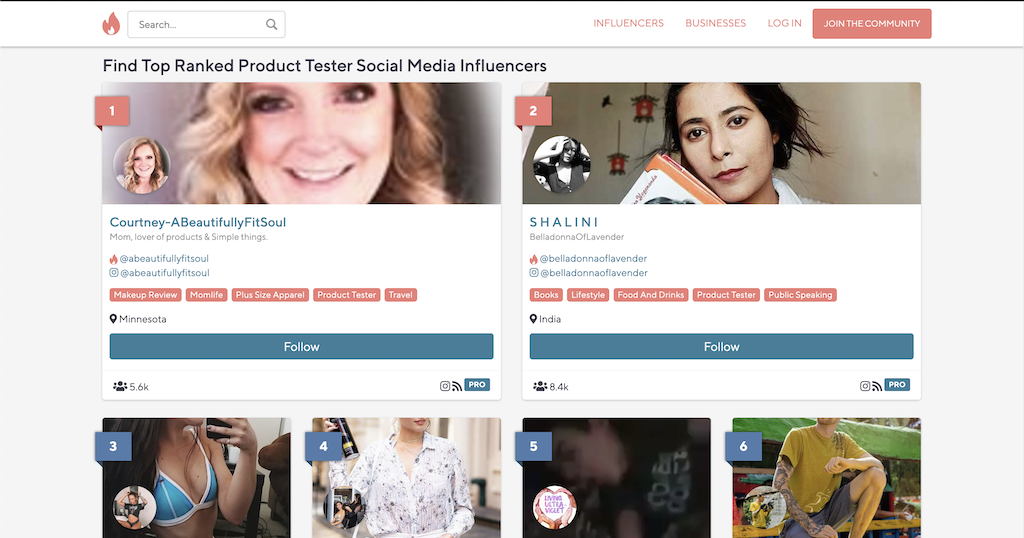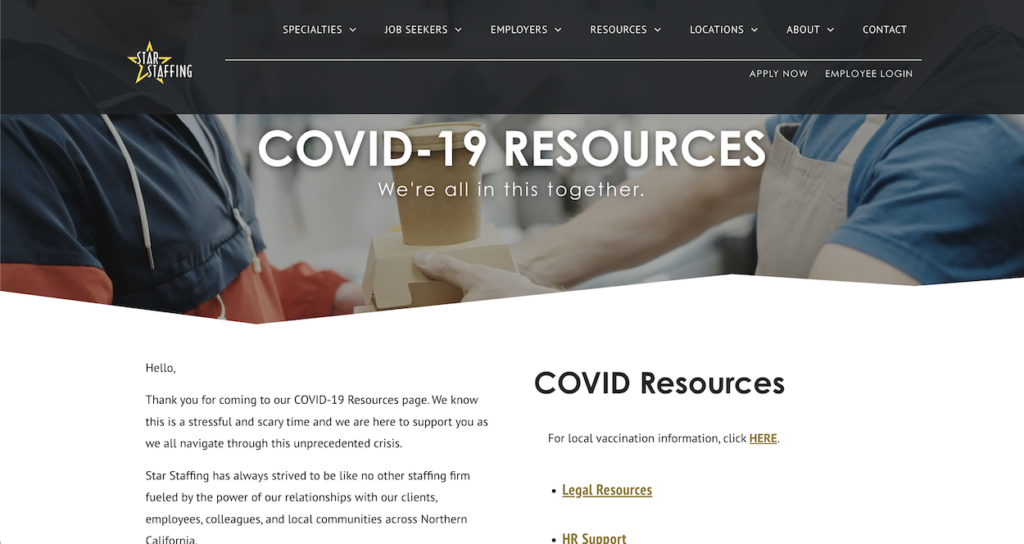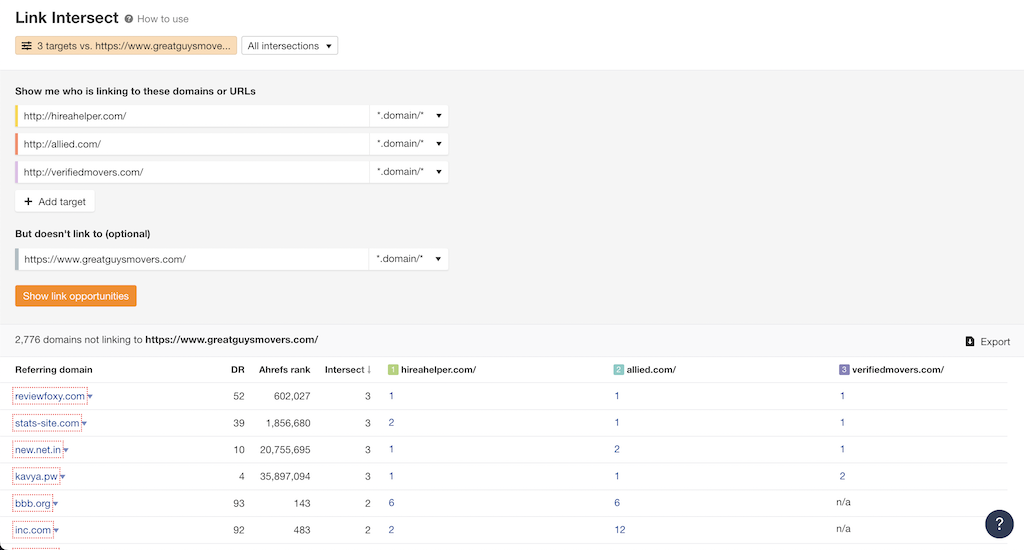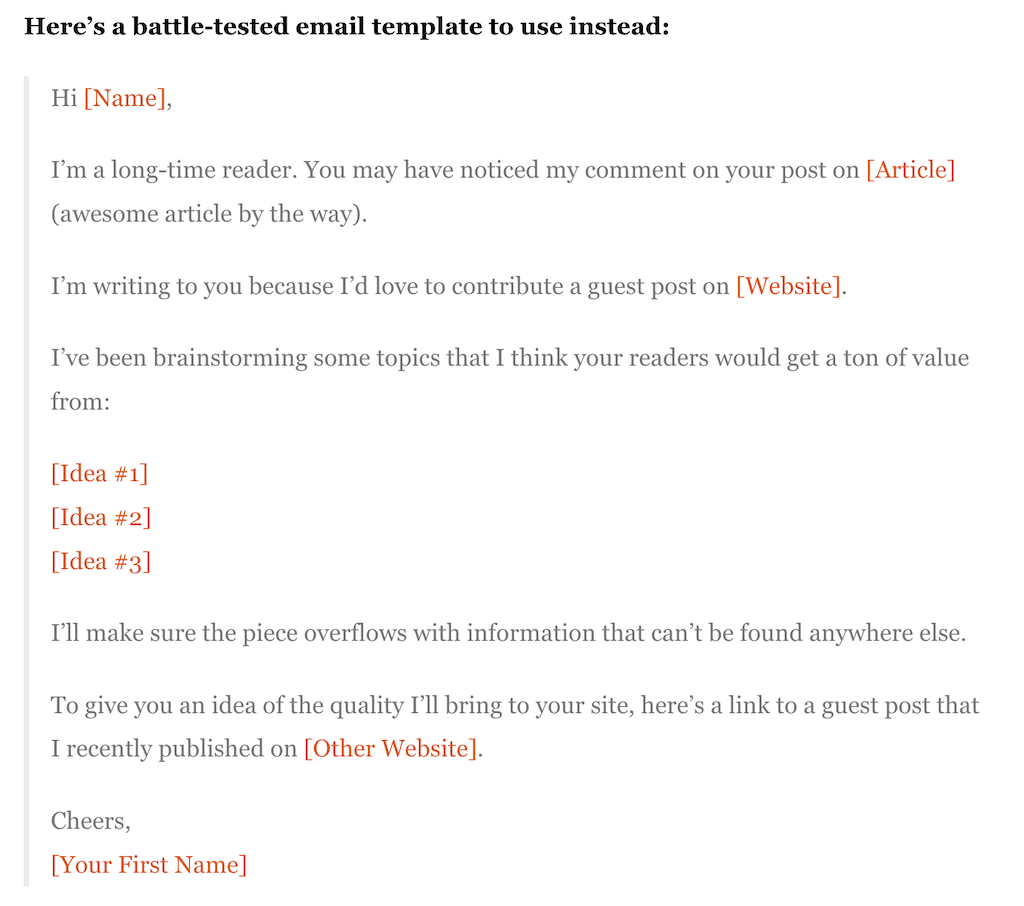- August 1, 2023
- by Olivia
- Link Building
- 0 Comments
In the ever-evolving digital world, standing out is key, especially for small eCommerce businesses. You need more than just a beautiful website to navigate the competitive online landscape. You need a robust, well-rounded SEO strategy; a crucial part is link building. Yes, you read that right. Link building – the art and science of earning valuable backlinks to your site.
These backlinks boost your visibility in search engine results and drive quality traffic to your eCommerce store. They establish credibility, create opportunities for more sales, and elevate your brand. And isn’t that what all business owners are aiming for?
But wait, there’s more. Effective link building is not just about quantity; it’s about quality. Therefore, learning the tactics to earn high-quality backlinks is vital. Luckily, you’re in the right place. In this article, we’ll share 12 effective link building tactics that can propel your eCommerce brand to greater heights.
The Importance of Link Building in eCommerce
If you’re serious about growing your eCommerce business, link building is an aspect you can’t overlook. But why is that? Let’s break it down.
Firstly, links are among the top factors search engines use to rank websites. High-quality and high-authority backlinks signal to search engines that your site is a valuable resource. This can lead to improved rankings, and as you may guess, higher rankings translate to more visibility. More visibility means more potential customers finding your products.
Furthermore, links are essentially digital referrals. When another site links to yours, they’re vouching for your content. They tell their audience, “Hey, we trust this source, and you should too!” This drives traffic to your site and helps establish your brand’s authority and trust.
Understanding the Connection Between Link Building and SEO
In digital marketing, SEO (Search Engine Optimization) is king, and link building is its trusted knight. If you’re wondering about their connection, let’s clear the mist.
SEO is all about optimizing your eCommerce site to make it more appealing to search engines. It’s like sprucing up your storefront, making it easy for potential customers (or, in this case, search engines) to find you. Now, imagine link building as recommendations from other store owners, telling their customers about your fantastic shop.
Each quality backlink is like a vote of confidence in your content. It signals to search engines that other websites find your content valuable and trustworthy. And when search engines trust you, they’re more likely to show your site higher in search results.
Simply put, link building can strengthen your SEO strategy and help your eCommerce site climb. So, don’t just optimize. Get building those links.
The Power of High-Quality Content
As an eCommerce business owner, the importance of high-quality content cannot be overstated. But why is it even more crucial in your case?
For starters, content helps you showcase your products and services in the best light. It gives you the opportunity to provide detailed information, convey your brand values, and convince potential customers of your product’s value. But that’s just the tip of the iceberg.
More importantly, high-quality content is a magnet for backlinks. When you consistently produce stellar content, other websites will naturally link back to your site, boosting your SEO. Think of it like this – your content is the star of the show, and the backlinks are the applause. So, invest in high-quality content. It will enhance your brand’s reputation and pave the way for a successful link-building strategy.
Leveraging Blogs, Infographics, Videos for Link Attraction for eCommerce Brands
Well-crafted blog posts can be a goldmine for backlinks. How? You can become a trusted resource by focusing on topics relevant to your products and industry. Blogs provide a platform for you to share expert advice, tips, and insights. This valuable content can attract other websites to link back to you.
Next up, infographics. They’re visually engaging, easy to share, and can simplify complex information. An infographic on a trending topic in your industry can earn you substantial backlinks.
Videos too have immense potential. Product demonstrations, user testimonials, or how-to guides can make your content more interactive and link-worthy.
The bottom line? Diversify your content. It’s not just about selling products; it’s about providing value. And in return, you’ll attract those coveted backlinks.
Case Studies and White Papers as Link Magnets
Let’s talk about a couple of underappreciated heroes in the world of link building: case studies and white papers. These can serve as powerful link magnets for an eCommerce brand like yours.
Firstly, case studies. They are proof that your product or service delivers results. They tell a story, from problem to solution, featuring your product as the hero. A compelling case study can be a backlink treasure trove when done right, as other businesses link to it as a trusted resource.
Now, onto white papers. These in-depth reports on a specific topic combine detailed research with expert insights. They’re a mark of authority, demonstrating that you’re not just a retailer, but a thought leader in your industry. And trust me, who wouldn’t want to link to a thought leader?
Product Reviews and Influencer Marketing
Product reviews are digital endorsements that enhance your credibility, while influencer marketing puts your products in front of a larger audience through trusted personalities. These tactics provide social proof, a psychological phenomenon where people copy the actions of others in an attempt to undertake behavior in a given situation.
In the following sections, we’ll explore how you can effectively leverage product reviews and influencer marketing in your link building strategy.
Approaching Bloggers and Influencers for Product Reviews
Getting bloggers and influencers to review your products can be a game-changer in your link-building journey. Firstly, find the right match. Look for bloggers and influencers who cater to an audience similar to your target market. It’s like finding the right host for a party – you want someone who will get your guests (or in this case, your products) excited!
Once you’ve found a good match, reach out to them. Send a personalized email expressing your interest in having them review your product. Be professional, yet personable. Remember, you’re not just asking for a review; you’re starting a potentially long-term relationship.
Finally, provide value. Offer a free product for review, a discount for their followers, or even an affiliate commission. Make it a win-win situation.
Getting bloggers and influencers on board can elevate your brand exposure and significantly boost your link-building efforts.
To help you get started, you can check out Influence’s top ranked product tester social media influencers:

The Role of Affiliate Marketing in Link Building
The nature of eCommerce and affiliate marketing go hand-in-hand. Your products are already online, making it easy for affiliates to link back to them. These backlinks are a valuable currency in the world of SEO, enhancing your site’s ranking potential.
Additionally, affiliates often have engaged audiences who trust their recommendations. When they share your products, their audience is more likely to visit your site and make a purchase. This leads to both higher conversions and increased organic traffic, another positive signal to search engines.
In essence, affiliate marketing can provide an effective, multi-faceted approach to your link building strategy. By aligning with relevant affiliates, you can tap into their audiences, boost your site’s SEO, and ultimately, drive your eCommerce success. So, don’t underestimate the power of this strategy.
Guest Posting Strategy
Guest posting, also known as guest blogging, is when you write content for another website. It’s like being a guest speaker at an event – you’re given a platform to share your insights, and in return, you attract new listeners.
In the world of digital marketing, guest posting helps you reach a wider audience, earn high-quality backlinks, and build authority in your industry.
Identifying Potential Websites for Guest Posting
Look for websites that are relevant to your eCommerce brand. If you sell fitness equipment, for instance, a health and wellness blog could be a perfect fit. Relevance ensures that your guest post will reach an audience genuinely interested in your products.
Also, consider the website’s authority. High-authority websites can pass on some of their SEO power to your site, giving your backlinks more value. Tools like Moz’s Domain Authority checker can help you gauge a site’s credibility.
Remember, successful guest posting requires strategic planning. Make sure to identify potential websites that align with your brand and can boost your link-building strategy. The right partnership can create a win-win situation for both parties.
Crafting Compelling Content for Guest Posts
Begin by understanding the audience of the site you’re guest posting on. What are their interests? What problems are they facing? Answer these questions and tailor your content accordingly. If you’re a fitness equipment seller guest posting on a wellness blog, consider crafting a post about home workout routines.
Additionally, bring your unique perspective to the table. Share industry insights, provide useful tips, or discuss trends. Make your content both informative and engaging.
Remember, a successful guest post isn’t overly promotional. Instead, it’s a blend of valuable information, sprinkled with subtle references to your products or services. So, focus on providing value and let your content do the talking.
Using Social Media for Link Building
Social media platforms offer a unique opportunity to reach a broader audience, engage with your customers, and yes, boost your link building efforts. These platforms can be the perfect stage to showcase your high-quality content, encouraging shares and driving traffic back to your site.
Utilizing Social Platforms to Increase Website Traffic
Start by sharing your high-quality content on your social media channels. Be it a blog post, an infographic, or a product video – if it’s valuable, share it. Include clear, compelling calls-to-action and direct links to your site. This can lead your followers back to your website, increasing your traffic.
Also, engage with your audience. Respond to comments, participate in discussions, and be an active member of your social community. Remember, engagement encourages sharing, and sharing can lead to more visibility and more website traffic.
So, don’t underestimate the power of social media. It’s not just about likes and followers; it’s a gateway to boost your site’s traffic and improve your link-building efforts.
Encouraging Shares and Backlinks through Engaging Content
Creating engaging content can encourage shares and backlinks, amplifying your eCommerce brand’s reach. This strategy hinges on producing content that not only resonates with your audience but also compels them to share it.
When you post an insightful blog, an appealing infographic, or an engaging video on your social platforms, and your audience finds it valuable, they are likely to share it. These shares can lead to more exposure, and subsequently, more traffic to your site.
Moreover, if your content is shared widely and catches the eye of other businesses or bloggers, they might link back to it from their own sites. These backlinks can contribute significantly to your SEO efforts.
So, focus on creating content that’s not just informative, but also engaging. Evoke emotions, spark conversations, and provide value. The more your audience enjoys your content, the more they’ll want to share it, organically boosting your backlinks.
Resource Page Link Building
Resource page link building might not be the first strategy you think of when working on your link building efforts. Yet, it can be a goldmine for eCommerce brands like yours.
Resource pages are sections on a website that link out to great content on a specific topic. They’re designed to help the site’s visitors find high-quality information. For you, getting a link from a resource page means getting in front of people who are already interested in what you offer.
Identifying Relevant Resource Pages
Identifying relevant resource pages is the first step in resource page link building. These are the pages you want to be featured on, and finding the right ones can significantly enhance your eCommerce brand’s visibility.
Start by searching for resource pages that are relevant to your industry. Use search operators like “[your industry] + resources” or “[your industry] + useful links” on search engines. This can help you find pages that list resources related to your business.
Next, evaluate these pages for quality and relevance. Does the page have a good domain authority? Is it frequently updated? Do they link out to high-quality sites? If the answer is yes, it’s a potential candidate.
For example, we launched a resources page campaign a few years ago for our client in the gaming space, and we won a link in this resources page:

Strategies for Getting Your eCommerce Brand Listed
First, create content that fits the resource page. If the page lists resources for healthy recipes, and you sell organic food products, consider creating a blog post with unique, healthy recipes using your products.
Next, reach out to the website owner or the person in charge of the resource page. Craft a polite, personalized email stating who you are, what your business is about, and why your content would be a valuable addition to their resource page.
Keep in mind, not all outreach efforts will be successful. That’s okay. Focus on providing value and building relationships. Over time, these efforts can lead to more backlinks, improving your brand’s visibility and SEO.
Competitor Backlink Analysis
In the competitive world of eCommerce, understanding your competition can give you an edge. This is particularly true when it comes to link building. A well-executed competitor backlink analysis can provide valuable insights for your own strategy.
By examining where your competitors are getting their backlinks from, you can discover new opportunities for your own brand. It’s like deciphering their playbook and using it to your advantage.
A quick way to identify your competitor’s backlinks is by using Ahref’s intersect tool:

Understanding Competitor Link Profiles
A link profile refers to the collection of backlinks a website has earned. By analyzing your competitor’s link profile, you can gain insights into which websites are linking to them, the quality of these backlinks, and the types of content being linked to.
This can help you identify potential linking opportunities for your own brand. Maybe there’s a popular blog in your industry that’s frequently linking to your competitor. Perhaps, they’ve been featured in an industry publication you hadn’t considered.
By understanding your competitor’s link profile, you can find new avenues for your own link building efforts. It’s like taking a sneak peek into their strategy, and using it to inform and enhance your own.
Leveraging Competitor Research for Link Building
Competitor research is a powerful tool in your link building toolkit. It’s about understanding your competitor’s strategy and using it to strengthen your own.
With a clear understanding of where your competitors are getting their backlinks, you can target the same sources. Perhaps they have a strong relationship with an industry blog, or they’re frequently featured in a popular online magazine. Knowing this, you can approach these platforms with your high-quality content and earn a link.
Additionally, competitor research can also highlight any gaps in your strategy. If a competitor is being linked to from a certain type of content that you’re not currently creating, that’s an area you might want to explore.
In essence, competitor research isn’t about copying. It’s about learning, adapting, and improving.
Building Relationships and Partnerships
Establishing meaningful relationships with bloggers, influencers, and other industry players can open the door to a world of link building opportunities for your eCommerce brand. You could benefit from guest posting, affiliate marketing, or even simple shout-outs.
Here’s a sample of a guest posting email template you can use when doing outreach:

Networking in the Digital Space
The digital space has transformed the way we network, and it’s especially true for eCommerce brands looking to enhance their link building.
First, consider joining online communities relevant to your industry. Whether it’s a forum, a social media group, or an industry-specific site, these platforms can provide valuable networking opportunities. Participate in discussions, answer questions, and share your content. This can establish your brand as a valuable contributor and open up avenues for backlinks.
Also, attend virtual conferences and webinars. Not only do these events provide a wealth of information, but they also allow you to connect with influencers and thought leaders in your industry.
Remember, networking isn’t about immediate gains. It’s about building long-term relationships that can eventually yield fruitful collaborations.
Collaborating with Complementary Businesses for Mutual Benefit
Look for businesses that offer complementary products or services. For instance, if you sell fitness equipment, a partnership with a health supplement company could be beneficial. Together, you can co-create content, host webinars, or run joint promotions. These collaborations often lead to both parties linking to each other’s sites, creating valuable backlinks.
Remember, collaboration is about mutual benefit. It’s about creating a partnership where both businesses grow and thrive together. And in the process, you enhance your link-building efforts and strengthen your online presence.
Broken Link Building
Broken link building involves finding broken links on other websites, creating relevant content to replace the broken link, and then suggesting to the website owner to replace the broken link with a link to your new, relevant content.
Finding and Replacing Broken Links
The process of broken link building starts with finding those broken links. There are several online tools, such as Broken Link Checker or Dead Link Checker, which can help you identify broken links on relevant websites.
Once you find a broken link, the next step is to create content that could serve as an appropriate replacement. This requires understanding the context of the original link. What topic did it cover? What value did it provide? Your replacement content should offer similar value or even more.
After creating your content, reach out to the website owner. Politely point out the broken link and propose your content as a high-quality replacement. If done respectfully and professionally, this could result in a new backlink to your eCommerce site.
Creating Linkable Assets
Creating linkable assets is a long-term, sustainable strategy that can elevate your link-building efforts and boost your eCommerce brand’s visibility. Linkable assets are high-quality content pieces that naturally attract backlinks due to their value, uniqueness, or relevance.
They could be in-depth guides, original research, infographics, or any content that delivers exceptional value. Creating such assets can take time and resources, but the payoff in terms of SEO and brand recognition can be significant.
Developing Unique, Relevant, and High-Value Content
Creating linkable assets begins with developing unique, relevant, and high-value content. Remember, the content you create is the magnet that attracts backlinks. The stronger the magnet, the more links it will attract.
Start by identifying topics that are relevant to your eCommerce brand and your audience. Use keyword research tools to find out what your audience is searching for and tailor your content accordingly.
Focus on adding unique value. Can you provide a fresh perspective on a topic? Do you have original research or data to share? The more unique your content, the more it stands out, and the more likely it is to earn backlinks.
Finally, ensure your content is high-quality. Invest time in crafting well-researched, well-written, and visually appealing content. It’s this level of quality that will make others want to link to your content.
Promoting Linkable Assets for Maximum Exposure
Once you’ve developed your linkable assets, the next step is to promote them for maximum exposure. After all, even the most fantastic content won’t generate backlinks if nobody knows it exists.
One effective strategy is to leverage your existing network. Share your content with your email subscribers, post it on your social media platforms, and reach out to industry influencers who might find it valuable.
Consider using paid promotions like social media ads or Google Adwords to extend your reach further. This can be particularly effective for new eCommerce brands that haven’t yet built a large audience.
Another strategy is to engage in guest posting or partnerships with complementary businesses to promote your linkable assets to a wider audience.
Remember, the goal is to get your content in front of as many relevant eyes as possible. So, don’t be shy about promoting your linkable assets. The more visibility they have, the more backlinks they can generate.
Link Reclamation
Link reclamation is a low-hanging fruit in link building that is often overlooked. Yet, it’s a simple and efficient way for eCommerce brands to reclaim lost link equity and enhance their SEO performance.
Link reclamation involves finding places online where your brand is mentioned but not linked to, or where the links to your site are broken or incorrect and then reaching out to the relevant parties to correct or add the link.
Tracking Your Brand Mentions
Tracking your brand mentions is the first step in link reclamation. Numerous tools available online, such as Google Alerts or Mention, can help you monitor when your brand is mentioned online.
Start by setting up alerts for your brand name and any specific product names or unique phrases associated with your brand. This way, you’ll be notified whenever your brand is mentioned online.
Once you receive an alert about a brand mention, inspect the page. If there’s a mention without a link back to your site, that’s a potential opportunity for link reclamation. By following up on these mentions and politely requesting a link back, you can turn these mentions into valuable backlinks for your eCommerce brand.
Turning Unlinked Mentions into Backlinks
Once you’ve identified unlinked mentions of your brand, the next step is to convert them into backlinks. While this may sound complex, it’s often as simple as reaching out to the right person.
Identify the author of the content or the website owner and send them a polite email. Express your appreciation for the mention and kindly ask if they’d consider adding a link to your website for their audience’s convenience.
Remember, it’s important to show how linking back to your site adds value for their readers. Perhaps your site offers more information about the product mentioned or provides access to related resources.
Don’t be disheartened if you don’t always get a response. It’s a numbers game. With persistence, you’ll start to see unlinked mentions turning into valuable backlinks, bolstering your eCommerce brand’s SEO strength.
Measuring Your Link Building Success
Understanding how to evaluate the results of your link building tactics will give you valuable insights into what works and what doesn’t. It will help you make data-driven decisions and tweak your strategies as needed.
Tools and Metrics to Evaluate Link Building Performance
When assessing your link building progress, it’s crucial to have the right tools on hand. Google Analytics, SEMrush, Ahrefs, and Moz are excellent platforms for tracking various metrics related to backlinks.
One of the most significant metrics to track is the number of backlinks you’ve gained. Seeing an increase in your backlinks indicates that your link building efforts are paying off.
But it’s not just about quantity; quality matters too. Look at the domain authority of the sites linking back to you. High-authority links are a testament to your credibility and will boost your site’s ranking on search engines.
Adjusting Your Strategy Based on Data Insights
The beauty of data is its ability to guide you, steering your strategy towards success. As an eCommerce business owner, it’s vital to continually evaluate and adjust your link building plan based on the insights your data offers.
Are your high-authority backlinks leading to an uptick in referral traffic? If yes, then continue targeting similar sites. If not, it might be time to reassess your approach. Perhaps your content isn’t resonating or targeting the wrong audience.
Take note of which types of content are earning the most backlinks. If blogs are performing well, consider allocating more resources there. You might want to explore other formats if infographics aren’t gaining traction.
Staying Current with Link Building Best Practices
Understanding what works today may not necessarily yield results tomorrow. It’s essential to stay informed about new techniques and algorithm updates and avoid common mistakes when building backlinks. Staying current isn’t just about survival; it’s about getting ahead.
Remember, a well-crafted link building strategy can give you a competitive edge, positioning your brand at the forefront of the digital marketplace. With the latest knowledge, you’ll be ready to navigate the shifting tides of link building.
Adapting to Search Engine Algorithm Changes
No matter how seasoned you are in eCommerce, search engine algorithm changes can throw a spanner in the works. As such, it’s vital to adapt and evolve your link building strategy in response.
Google, Bing, and other search engines often tweak their algorithms. The goal? To improve user experience and combat spam. But these changes can also impact your site’s ranking. Therefore, you must be ready to adapt swiftly.
Stay informed about algorithm updates; don’t hesitate to revise your strategy when needed. Remember, search engine optimization is a dynamic process, not a one-time task. So, don’t get complacent. Keep learning, adapting, and optimizing your link building strategy to ensure your eCommerce brand continues to thrive.
Continuous Learning and Improvement in Link Building
No one ever truly masters link building, given its ever-evolving nature. Hence, staying on top of industry trends and adapting your strategy is essential. New link building methods, SEO updates, and digital marketing tactics emerge regularly. As such, it’s essential to keep your knowledge up-to-date.
Consider attending webinars, reading industry blogs, or participating in SEO forums. Not only will you learn new strategies, but you’ll also get to share ideas and experiences with fellow marketers. Remember, in link building, as in business, your capacity to learn and adapt is your path to success.
Final Thoughts
In conclusion, link building is an essential component of successful eCommerce strategies. It not only boosts your SEO ranking but also drives organic traffic to your site and strengthens your brand reputation.
The 12 tactics discussed, from high-quality content to leveraging competitor research and beyond, offer versatile ways to grow your eCommerce brand. Remember, the key is to adopt a multi-faceted approach, combining various techniques that align with your brand values and objectives.
Above all, remember that link building isn’t a one-time effort but a long-term commitment. With continuous learning and adaptability, you’re on the path to maximizing your online presence. Embrace the journey, because the links you build today will pave the way for your eCommerce brand’s success tomorrow. If you require assistance in link building for our ecommerce business, feel free to contact The Content Hero to begin.



